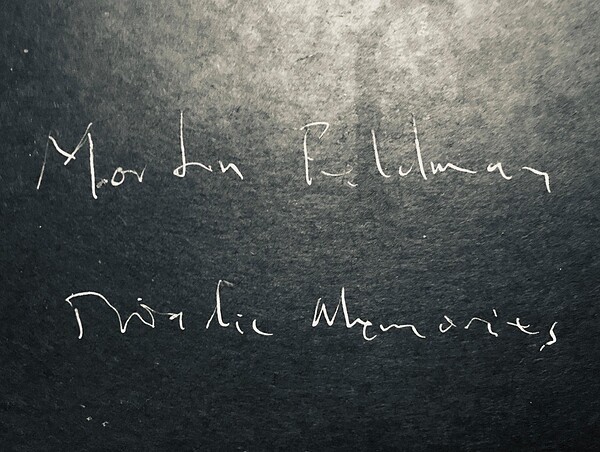Calendar

Recital: Morton Feldman “Triadic Memories”
Time
7:30 PM
Venue
Tenri Cultural Institute
Program
Morton Feldman: Triadic Memories
More Information
TICKETS ONLY AVAILABLE IN ADVANCE VIA Eventbrite
(No ticket sales at the door)
$20 General | $10 Students & Seniors
>>Proof of Vaccination, ID, & Masking Required<<
On Friday, June 24 at Tenri Cultural Institute in New York City, Either/Or is proud to present a solo concert of Morton Feldman’s epic Triadic Memories, a celebration of new beginnings and historic reflection during a summer we hope is a new stage of us living post-pandemic. Either/Or has a long tradition of performing Feldman’s music, most notably the 2014 US tour of the four and a half hour long For Philip Guston.
Taka Kigawa, celebrated pianist and longtime collaborator with Either/Or will bring this piece to life in the acoustically serene Tenri Cultural Center on West 13th Street in Manhattan.
About the music - from the publisher, Universal Edition
Triadic Memories is jointly dedicated to Aki Takahashi and Roger Woodward. After the first German performance, Morton Feldman laconically described it as the “biggest butterfly in captivity", and it is indeed vast, lasting over an hour and a half. During the eighties, Feldman's pieces began to escalate in length – compared to the 5-hour String Quartet No. 2 or the 4-hour For Philip Guston, Triadic Memories is almost aphoristic. Why these enormous lengths? Feldman says: "Personally, l think the reason the pieces are so long is that form, as I understand it, no longer exists... I'm not looking so much for a new form, I’d rather substitute the word scale or proportion, and in music it's very difficult to distinguish between a thing's proportions and its form...My pieces aren't too long, most pieces are actually too short...lf one listens to my pieces, they seem to fit into the temporal landscape I provide. Would you say that the Odyssey is too long?”
Let's not argue about Homer; there are other factors. During the eighties, Feldman became obsessed with 19th century Turkish carpets. Part of this interest was financial, and allowed him to die rich. But the patterning of these carpets also became a (musical) preoccupation for him, and is reflected in titles of late pieces such as Why Patterns? and Crippled Symmetries. This interest led him to completely reassess the role of pattern and repetition in his work, and, as indicated above, of 'scale':
“Music and the designs or a repeated pattern in a rug have much in common. Even if it be asymmetrical in its placement, the proportion of one component to another is hardly ever substantially out of scale in the context of the whole. Most traditional rug patterns remain the same size when taken from a larger rug and adapted to a smaller one...
I was once in Rothko's studio when his assistant restretched the top of a large painting at least four times. Rothko, standing some distance away, was deciding whether to bring the canvas down an inch or so, or maybe even a little bit higher. This question of scale, for me, precludes any concept of symmetry or asymmetry from affecting the eventual length of my music.
As a composer I am involved with the contradiction in not having the sum of the parts equal the whole. The scale of what is actually being represented, whether it be of the whole or of the part, is a phenomenon unto itself. The reciprocity inherent in scale, in fact, has made me realize that musical forms and related processes are essentially only methods of arranging material and serve no other function than to aid one's memory.
What Western forms have become is a paraphrase of memory. But memory could operate otherwise as well. In Triadic Memories, there is a section of different types of chords where each chord is slowly repeated. One chord might be repeated three times, another, seven or eight – depending on how long I felt it should go on. Quite soon into a new chord I would forget the reiterated chord before it. I then reconstructed the entire section: rearranging its earlier progression and changing the number of times a particular chord was repeated.
This way of working was a conscious attempt at formalizing a disorientation of memory. Chords are heard repeated without any discernible pattern. In this regularity (though there are slight gradations of tempo) there is a suggestion that what we hear is functional and directional, but we soon realize that this is an illusion: a bit like walking the streets of Berlin – where all the buildings look alike, even lf they're not.”